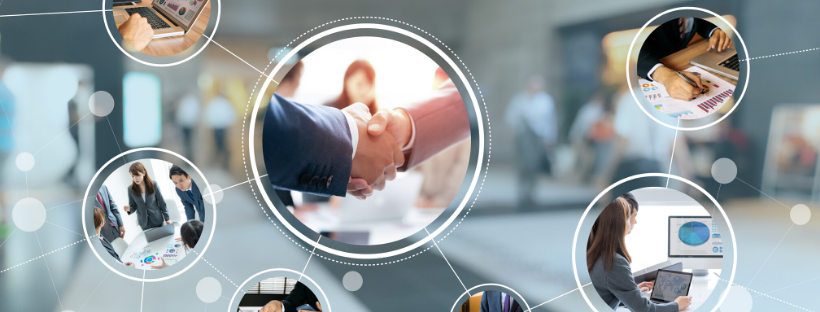
Think about the last time you were in a situation where you were unsure if the person you were talking to was truly listening to what you had to say. Were you talking to a colleague or maybe a partner or a supervisor? And did their nonverbal cues demonstrate a lack of active listening? How did you know they were not present with you? Although you may have been hoping for a dialogic exchange, the lack of active listening from your audience implies dialogue was not possible at that moment. Previous scholarship has demonstrated that active listening is necessary for dialogue to occur (Macnamara, 2016). So, how can organizations and individuals encourage and support the development of active listening skills?
In my recent study (Lemon, 2019) that relied on 32 interviews with individuals in diverse positions, organizations, and locations to achieve maximum variation, I found that employee engagement only occurs when the experience is supported by dialogue and active listening. Dialogue, facilitated by active listening, leads to employee engagement; without the listening component, there is no dialogue, which means employee engagement is absent (Lemon, 2019). In other words, if an employee is to experience meaningful employee engagement, “she needs to engage in dialogue with the interlocutor actively listening” (p. 192). Macnamara (2016) previously conceptualized active listening as an ethical practice where recognition is offered, the other’s point of view is acknowledged and considered, attention is focused, understanding is sought, and an appropriate response is provided throughout the exchange. The ethical practice of active listening ensures employees experience the most meaningful engagement (Lemon, 2019).
Given the connection between dialogue, active listening and employee engagement, organizations ought to strategically focus on the communication needs of employees to ensure they feel heard, which creates more possibilities for dialogue. Such opportunities maybe more difficult for large, multinational organizations separated by space and time. Therefore, internal communication practitioners should be encouraged to enhance their active listening skills to assist in cultivating an organizational climate entrenched in open communication exchanges. In addition, managers at various organizational levels need to be trained to develop and refine their active listening skills to help cultivate more opportunities for dialogue.
Since active listening starts with the individual, what does it take to implement and hone this skill? I have a suggestion. Slow down, be present, and consider the needs of your dialogic partners, all of which are an extension of mindfulness. Kabat-Zinn (2003) defined mindfulness as “the awareness that emerges through paying attention on purpose, in the present moment, and nonjudgmentally to the unfolding of the experience moment by moment” (p. 145). In other words, mindfulness is the nonjudgmental awareness of accepting each present moment as it unfolds (Kabat-Zinn, 2003). Mindfulness is developed through meditation practices like focusing on the breath, sitting in open awareness, or conducting a body scan. Through these meditation practices, an individual develops the ability to exercise nonjudgmental awareness and acceptance, which hones the skill of being present in the moment (Kabat-Zinn, 2003).
I personally use mindfulness as a research tool to ensure I am present, actively listening, and not collecting data on auto-pilot (cf. Lemon, 2017). Mindfulness can also be used to develop active listening skills to support dialogue; such practices lead to an increase in empathy (Birnie, Speca, & Carlson, 2010; Wei, Liao, Ku, & Schaffer, 2011). Empathy is having the ability to understand the experience, emotions, and feelings of the other (Wei et al., 2011), which are fundamental to active listening. Therefore, when organizations are considering how to teach active listening skills to internal communication practitioners and management, developing mindfulness programs is one way to foster this skill and enrich the engagement experience. In doing so, we all learn how to be more empathetic and present with our dialogic partners from all facets of our lives.
![]()
 Laura L. Lemon, Ph.D. is an assistant professor at the University of Alabama in the Department of Advertising and Public Relations. She can be reached at lemon@apr.ua.edu.
Laura L. Lemon, Ph.D. is an assistant professor at the University of Alabama in the Department of Advertising and Public Relations. She can be reached at lemon@apr.ua.edu.
References
Birnie, K., Speca, M., & Carlson, L. E. (2010). Exploring self-compassion and empathy in the context of mindfulness-based stress reduction (MBSR). Stress and Health. Published online in Wiley InterScience (www.interscience.wiley.com)
Kabat-Zinn, J. (2003). Mindfulness-based interventions in context: Past, present, and future, Clinical Psychology: Science and Practice, 10, 125-143.
Lemon, L. (2017). Applying a mindfulness practice to qualitative data collection. The Qualitative Report, 22(12), 3305-3313.
Lemon, L. L. (2019). The employee experience: How employees make meaning of employee engagement. Journal of Public Relations Research, 31(5-6), 176-199. doi.org/10.1080/1062726X.2019.1704288
Macnamara, J. (2016). Organizational listening: Addressing a major gap in public relations theory and practice. Journal of Public Relations Research, 28(3–4), 146–169. doi.org/10.1080/1062726X.2016.1228064
Wei, M., Liao, K. Y., Ku, T., & Shaffer, P. A. (2011). Attachment, self-compassion, empathy, and subjective well-being among college students and community adults. Journal of Personality, 79, 191-221.



